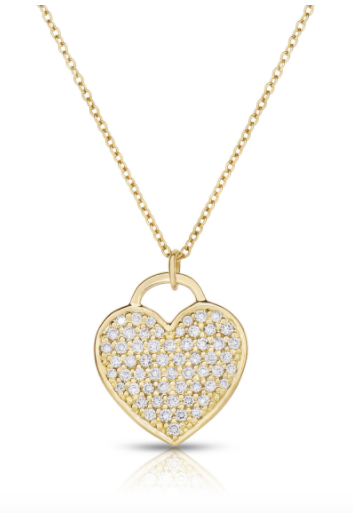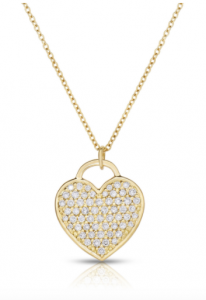
The talk centered on lab-grown diamonds, e-commerce, and video marketing.
Last week’s American Gem Society Conclave took place at the Loews Hollywood Hotel, just five minutes from my home, which made it convenient to do the important things: eat and drink my way around the neighborhood. Not only did I host out-of-towners for cocktails on my deck (a fun group led by my dear friend, publicist Michelle Orman), but I also got a chance to meet up with jewelry friends at several great local restaurants.
The week was a decadent reminder of what I love most about Conclave, besides the stellar education and unbelievable networking: the dining! On Tuesday night, on the eve of Conclave, I hit up Mama Shelter with Orman and gang. On Wednesday night, I laughed my way through a late dinner at Loteria with my friend and publisher Mark Smelzer and the supremely gracious Craig and Laura Underwood of Underwood’s Fine Jewelers in Fayetteville, Ark. And on Thursday, Omi Privé’s Manos Phoundalakis, Stuller’s Ashley Brown, Smelzer, my boyfriend Jim, and I dined at super-stylish Paley, in historic Columbia Square. Besides the fact that I need to show some restraint at the dinner table this week, I learned a slew of things at Conclave, easily the most worthwhile jewelry retail education event of the year.
Jay Leno is a joke machine.
The comedy legend gave the opening keynote address at Conclave. From World Cup soccer and Ikea to smart refrigerators and Donald Trump’s new reality show (“The Amazing Racist”), the one-liners that spilled forth from Leno’s mouth were funny and silly, if largely forgettable (thank God I remembered to take notes!). Now boasting a shock of white hair, the 66-year-old began his routine gently on Wednesday but ended with an impromptu bang, when he auctioned off tours of his much-celebrated collection of rare cars and motorcycles for $5,000 a pop. I counted close to $30,000 in pledges, all going to the Make-A-Wish Foundation!
Video content marketing is where it’s at.
“Facebook, Instagram—they’re all video-first platforms,” Todd Hartley, CEO of WireBuzz, told jewelers at his “Digital Marketing Tricks for Growing Jewelry Sales” seminar. Referring to Facebook founder Mark Zuckerberg, he said, “The Big Zuck knows people are four times more likely to watch video than read text. Video is effortless.” Hartley then rattled off some convincing bullet points: “People are three times more likely to share video. In a B-to-C world, people don’t make decisions by themselves anymore—they share information. Smaller fish are noticing the power of video. It has higher conversion rates.”
Get on board with live video.
Hartley encouraged retailers to experiment with Facebook and Instagram’s live video platforms and proved how easy it was by taking a live video of the audience. “On Facebook Live, you should stay longer than you would for other videos,” he said. “Google is looking for content quality and it determines that based on time on page, so the longer people are on there watching, the better the quality is.”
He was far from the only AGS speaker who urged retailers to embrace video content. Ford Saeks, president and CEO of Prime Concepts Group—who, in his “Business Growth Acceleration” seminar, suggested that videos “start with a headline, an intriguing question, a teaser”—and Ben Smithee, of The Smithee Group, both made it clear that the moving image is marketing gold. And they both shared:
The first rule of taking video on your smartphone—
Before you hit record, flip your phone on its side so your screen view is horizontal. Otherwise, you risk looking like an amateur.
By 2025, three out of four people in the workforce will be millennials.
Smithee threw down some compelling stats, including the one above and this one: “Currently, there are more than 50 million millennials in the workforce. They will eclipse boomers in spending,” he said. (Though boomers are far from out—read our upcoming May issue to find out why and how you should market to these classic big-spenders.)
Of the many insightful tidbits Smithee shared, reminding the audience that millennials “are the first generation to impact the generations before us” was a new one for me: “Our parents and grandparents are on Facebook, Snapchat, God forbid Tinder,” he said. “The purchase influence of the millennial mindset is everything.” In essence: We all text poop emojis to people on our smartphones, he said. (Okay, perhaps not all of us—but I must admit, guilty as charged.)
Lab-grown diamonds are a divisive issue (to say the least).
Charles Stanley, president of Forevermark U.S., introduced Leno’s keynote speech with a declaration: “We claim to sell precious, rare gems of everlasting value that are central to everlasting love,” he said. “Some contemplate selling imitations and synthetics, which are not rare. It’s undermining the DNA of jewelers. Jewelers sell precious, rare gems. Synthetics are not gems.”
At a seminar on synthetic diamonds led by De Beers Technologies U.K.’s Samantha Sibley, however, the message was less impassioned, more clinical: “Synthetics are diamonds produced in a completely different chemical environment than naturals,” she said. “Synthetic diamond is man-made material that possesses the same chemical composition and crystal structure as its natural counterpart. They look similar to naturals, but the difference is in how they’re grown.”
Expect the industry dialogue to get even more pointed as lab-grown brands such as Brilliant Earth, Pure Grown Diamonds, New Age Diamonds, Newrock Diamonds, DNEA, and Aidia (pictured below) ramp up their production and marketing.

Love Bonds pendant in 18k yellow gold with pavé lab-grown diamonds on extendable chain, $1,805; aidia.com
Check back next week for Part 2 of my takeaways from the 2017 AGS Conclave.
Follow JCK on Instagram: @jckmagazineFollow JCK on Twitter: @jckmagazine
Follow JCK on Facebook: @jckmagazine